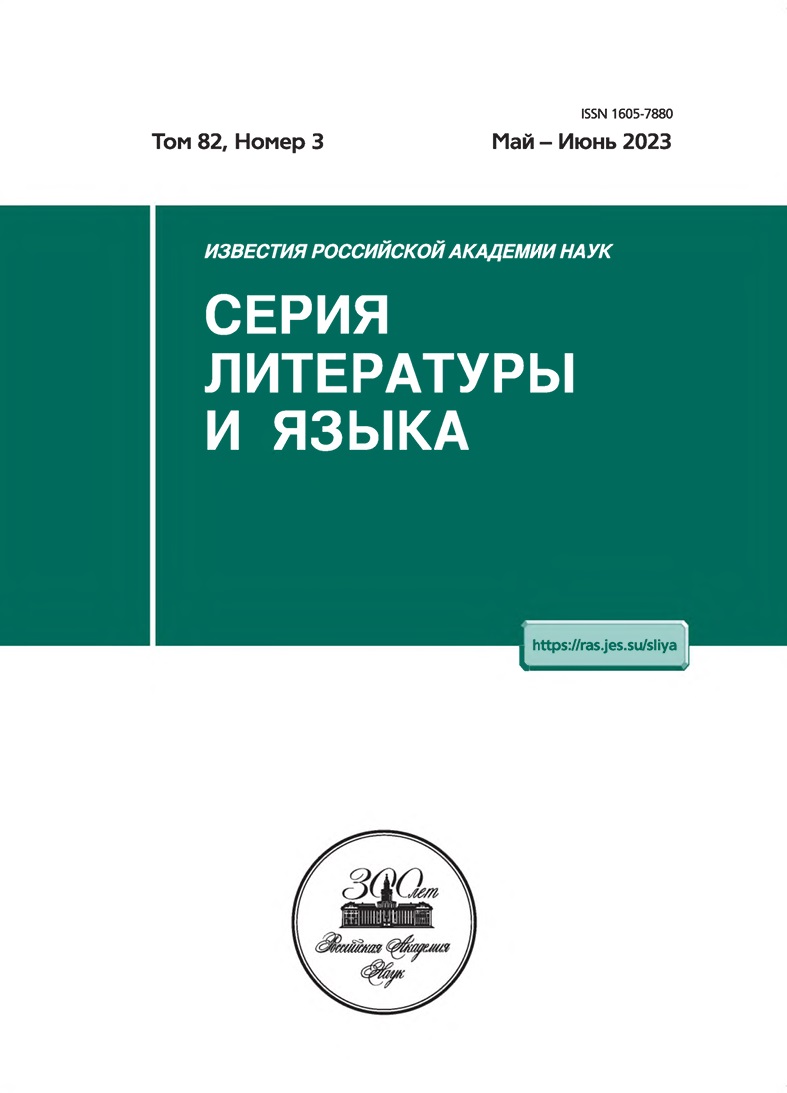The Opposition of “Kindred / Alien” in Small Genres of Buryat Folklore
- 作者: Dampilova L.S.1, Ghympilova S.D.1
-
隶属关系:
- Institute for Mongolian, Buddhist and Tibetan Studies of the Siberian Branch of the Russian Academy of Sciences
- 期: 卷 82, 编号 3 (2023)
- 页面: 70-76
- 栏目: Articles
- URL: https://rjonco.com/1605-7880/article/view/656965
- DOI: https://doi.org/10.31857/S160578800026317-4
- ID: 656965
如何引用文章
详细
The paper reveals the peculiarities of the opposition of friend / foe (or kindred / alien) in the family-kinship relations of Buryats on the example of Buryat proverbs and sayings in the aspect of semantic content of the text. It is relevant to study the role of the universal opposition of one’s own / another’s in the formation of people’s interaction in society, to identify national specifics in the use of mechanisms of identity and differences in paroemias. The work involves the materials of field research of recent years, archival and published sources proving the stability and preservation of small genres of folklore. It is revealed that in the local tradition, formulaic expressions similar in meaning can change their semantics, complementing and expanding the functions of the main character. It is established that the most common and preserved are proverbs about the maternal uncle with a positive connotation. It should also be concluded that in Buryat proverbs, the duality of the position of the maternal side and the recognition of the paternal, then maternal side of one’s close to a certain extent influenced the modification of oppositional markers of relatives-nephews.
作者简介
Ludmila Dampilova
Institute for Mongolian, Buddhist and Tibetan Studies of the Siberian Branch of the Russian Academy of Sciences6 Sakhyanova Str., Ulan-Ude, 670047, Russia
Sesegma Ghympilova
Institute for Mongolian, Buddhist and Tibetan Studies of the Siberian Branch of the Russian Academy of Sciences6 Sakhyanova Str., Ulan-Ude, 670047, Russia
参考
- Петри Б.Э. Внутриродовые отношения у северных бурят. Иркутск, 1925. 72 с.
- Басаева К.Д. Семья и брак у бурят: вторая половина XIX в. – начало XX в. Новосибирск: Наука, 1980. 223 с.
- Галданова Г.Р. Структура традиционной бурятской свадьбы // Традиционная культура народов Центральной Азии. Новосибирск: Наука, 1986. С. 131–159.
- Humphrey C. Karl Marx collective. Economy, Society and Religion in Siberian collective farm. Cambridge, London, New York, New Rochelle, Melbourne, and Sydney: Cambridge University Press, 1983. 524 p.
- Нимаев Д.Д. Проблемы этногенеза бурят. Новосибирск: Наука, 1988. 167 с.
- Сыденова Р.П. Улусная община западных бурят (вторая половина XIX – начало XX в.). Улан-Удэ: Изд-во БНЦ СО РАН, 2003. 129 с.
- Содномпилова М.М. Чужие для всех: группа “невесткиˮ в концептуальном универсуме монгольского общества // Сибирский сборник – 4. Грани социального: Антропологические перспективы исследования социальных отношений и культуры. (Памяти российского этнографа-тунгусоведа Надежды Всеволодовны Ермоловой) / Отв. ред. В.Н. Давыдов, Д.В. Арзютов. СПб.: МАЭ РАН, 2014. С. 419–432.
- Мадасон И.Н. Буряад арадай оньhон, хошоо yгэнyyд [Пословицы и поговорки бурятского народа]. Улан-Удэ, Буряад номой хэблэл, 1960. 401 с. [На бурятском языке]
- Батоева Д.Б., Галданова Г.Р., Николаева Д.А., Скрынникова Т.Д. Обряды в традиционной культуре бурят. М., 2002. 220 с.
- Пословицы и поговорки на калмыцком, бурятском, монгольском языках // Памятники фольклора монгольских народов. Т. VII. М.: ИМЛИ РАН, 2018. С. 197–431.
- Гомбожапов А.Г. Традиционные семейно-родовые обряды агинских бурят в конце XIX–XX вв. Новосибирск: Наука, 2006. 184 с.
- Балдаев С.П. Бурятские свадебные обряды. Улан-Удэ: Бурят. кн. изд-во, 1959. 179 с.
- Содномпилова М.М. “Река начинается с родника, а родство – с дяди по материˮ: группа нагасанар в монгольском социуме // Этнология, серия “Геоархеология. Этнология. Антропологияˮ. 2014. Т. 8. С. 100–109.
- Бальбурова Б.Ц.-Е. Буряад арадай оньhон үгэ. Пословицы и поговорки бурят. Улан-Удэ: ООО “Форвардˮ, 2020. 366 с.
- Фразеологический словарь бурятского языка / Сост. Т.Б. Тагарова. Иркутск: Изд-во ИГУ, 2014. 565 с.
补充文件









